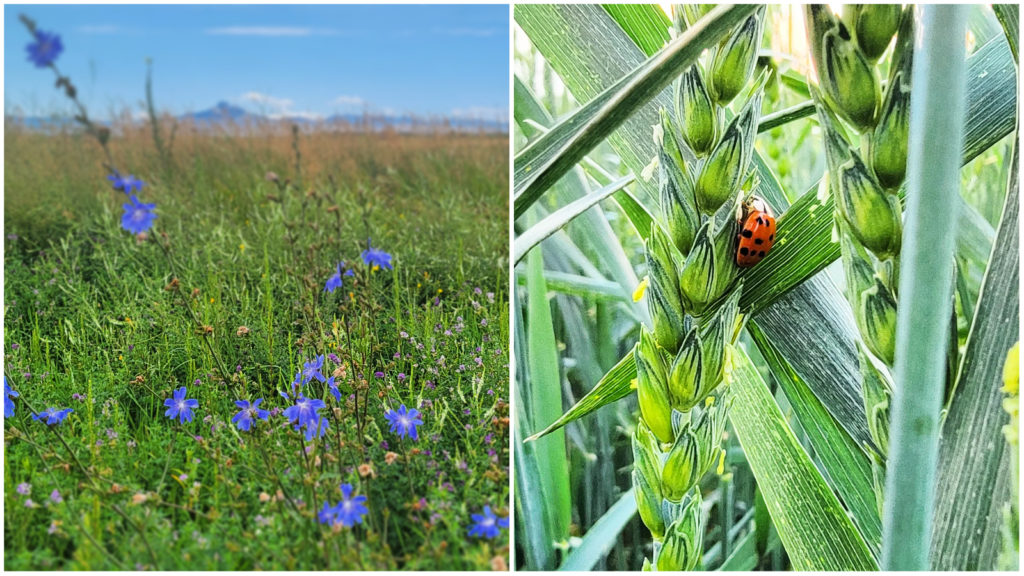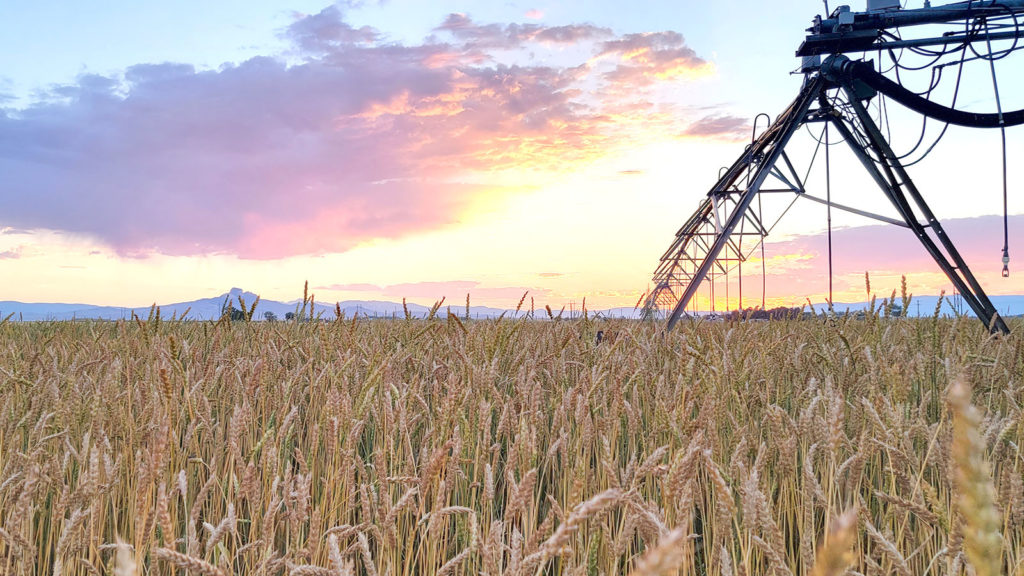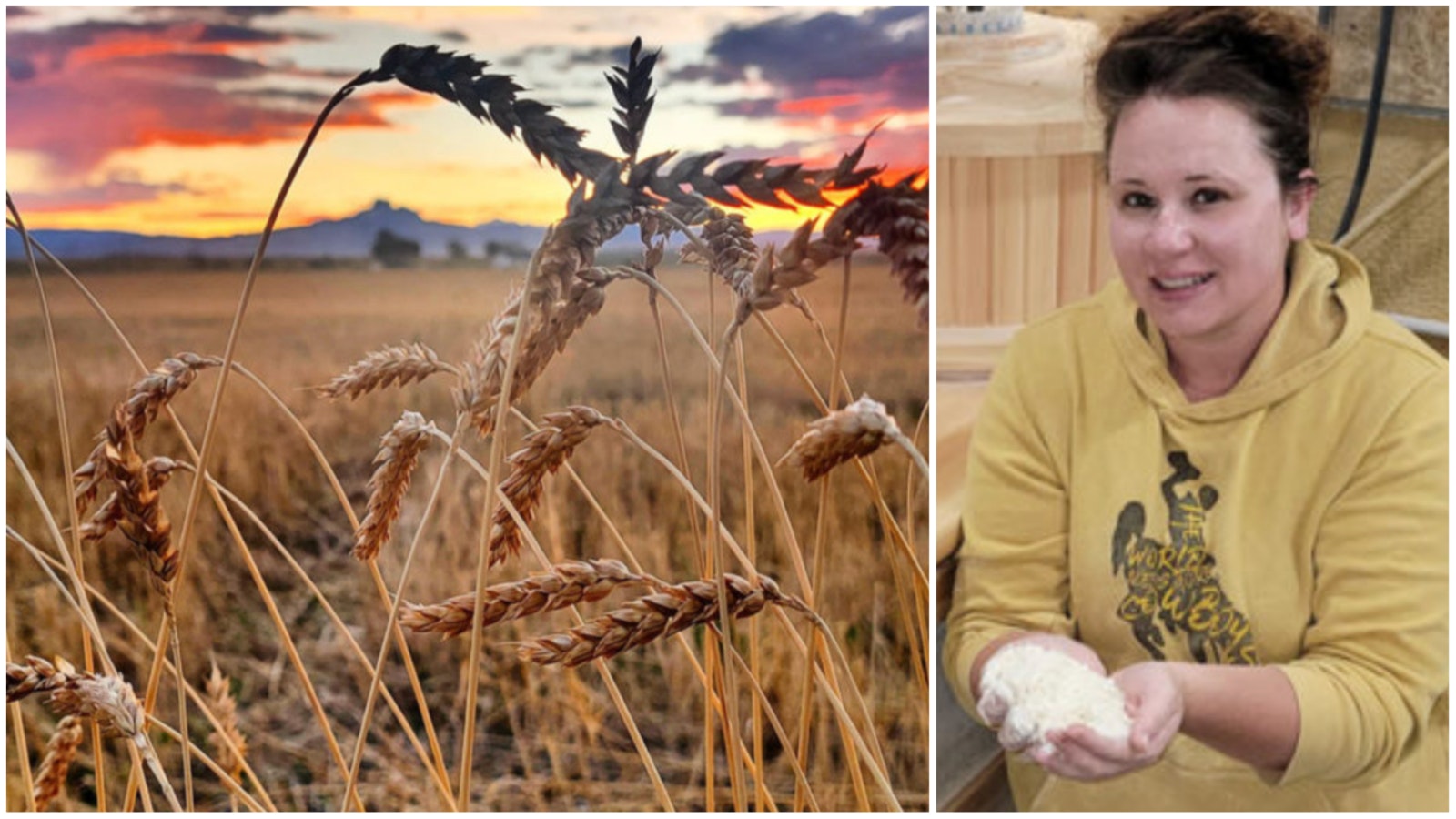When friends and family traveling abroad found they could more easily eat wheat products there without upsetting their stomachs, Sara Wood became determined to find out why.
What was different about their wheat and American varieties?
Wood had already taken a distiller’s class aiming to shift her fourth-generation farming operation into malting, but figuring out why her friends and family could more easily eat European breads took her down a completely new and different path.
Wood owns Wyoming Heritage Grains located in Powell, which grows ancient grains and stone-mills them the old-fashioned way.
What she’s found, anecdotally, is that many people who experience sensitivity to modern wheat-based products like bread and pasta don’t seem to have that same experience with bread and pasta made from her ancient grains.
Whether that’s due to something inherent to the grains, or because of industrial processes that strip out nutrients and add them back synthetically is not something science definitively pinned down, but Wood is happy that her business is opening a door that had closed for so many of her customers, as well as family and friends.
While many of the grains she grows were once nearly extinct, today these revived heritage grains offer an unmatched flavor profile for products like bread, biscuits and pastries, and all the other delicious things that come from flour.

Pandemic Push
Wood grew the first heritage grain in 2019.
“I was like, ‘Oh, we could malt that or do other things,’ and I started looking heavily into flour,” she said.
She actually bought a small mill around 2018 or 2019, but was still planning on milling grain as a side gig.
She also quit her day job about then so she could focus on this new venture full-time. The timing, it turned out, couldn’t have been more perfect. Not for malting, but for flour.
Breweries got walloped by the COVID-19 pandemic when restaurants were ordered to close, and snarled supply chains made it difficult for craft brewers to source containers for their product.
But there was no shortage of demand for flour.
“I really wasn’t set up for manufacturing flour all the way,” Wood said.
But she pivoted, taking a real-life, hands-on crash course in how to manufacture and distribute flour. When Wood discovered there was no commercial mill in Wyoming, she realized that a business stone-milling flour could potentially last past the pandemic, and she was all in.
“It was kind of by the seat of our pants, figuring it out as we went,” she said.
Sonora Something Special
Her first heritage wheat was called Sonora, a soft white wheat best suited for pastry flour or baked goods, such as muffins and cakes.
It has a great flavor profile, though, one that complements harder red wheats for baking bread.
She didn’t choose it for that, though.
“I really liked the history of (the grain),” Wood said. “It was grown commercially until 1980, which is when they started hybridizing it and it almost went extinct.”
A few small farmers and seed banks kept it going, which enabled Wood to source a few seeds.
“It did really well,” she said. “We have a very unique climate here. Being a high mountain desert, we don’t depend on rain. We’re not drylands farming. It’s all under irrigation, but it’s a very dry climate, so it’s a good grain-growing climate.”

Red Fife Broadens Opportunities
Wood has recently added Red Fife to the grains she grows, which is a heritage grain that had been grown all over Europe, possibly starting out in the Czech Republic.
“It ended up in Scotland, and this guy basically took a hat, scooped some grain out of this grain cart and took it with him to Canada,” Wood said. “So, they gave it to this David Fife and he grew it and it did really well.”
So well, in fact, it helped expand farming into western Canada and became at one time Canada’s national wheat.
“Like the Sonora, they started hybridizing it because these grains do have very low yields,” Wood said.
It also nearly went extinct, but with the grain having so much history, there was a national movement to keep growing it, which enabled Wood to source some of it for her operation.
Biodiversity Buzz
Bringing biodiversity back has long been a buzz word for environmentalists, but it’s got a growing presence in the foodie scene, where tasteful novelty has always been the king.
“We’ve lost a lot of biodiversity, and getting people to understand that they’re missing out,” she said. “People understand that about meat and vegetables, but no one’s really put the spotlight on grains.”

More Nutrition Too
But it’s about more than taste to Wood, who points out modern processing methods remove a lot of the nutrition that’s naturally in the whole grain.
Those methods include removing the outer coating of wheat, called bran, as well as the germ or kernel. That extends shelf life by reducing short-lived oils that go rancid quickly.
But what’s left, the endosperm, has far fewer nutrients and fiber than the bran and kernel.
Processing flour this way lops off three-quarters of the fiber, half the calcium, phosphorus and thiamine, more than three-quarters of the niacin and about one-third of the vitamin E that should naturally be present in the whole grain.
Manufacturers add some of those lost nutrients back with synthetics. These include thiamine, riboflavin and niacin, and often folic acid and iron as well, to enrich and fortify the flour.
But the fiber and the other missing nutrients besides those are not added back in. Nor are all the missing flavors.
The Way Our Grandmas Made Bread
It’s like what happens to tomatoes grown by large commercial organizations. Flavor is not the foremost concern.
“It’s just kind of plain,” she said. “With stone milling, a lot more of that nutrition is intact. It’s a really slow process, but I think the benefits outweigh any negatives that would be there. It’s, you know, the way our grandmas used to have bread.”
In fact, that’s one of the biggest compliments she gets at the farmers markets she attends.
“They’re like, ‘This is how bread used to taste when my mom or grandma made it,’” she said. “We’ve lost a lot of that with the processing, because of course everyone wants an indefinite shelf life. But that’s not meant to to be, and, when you do that, you’re not getting any of the nutrition.”
Finding A Niche In Mountain States
These days, Wood travels a 600-mile circuit in Montana, delivering flour to places like Pollard Hotel and Sue’s Everyday Foods in Red Lodge, as well as other locations in Billings.
She’s also taken it to places like Jackson and the Tetons around Wyoming.
“Alibi Pizza and Bakery in Laramie is using our products,” she said. “Meeteetse chocolates here — Tim Kellogg, he makes all his pastries with our product. Sweet Cheeks Meat in Jackson carries our products and uses it for a lot of their breakfast items.”
All of that growth has largely been through word of mouth, Wood said.
For the future, she wants to set up a more regional distribution to more readily get products to buyers, and she’s also looking into regenerative farming practices to bolster the quality of her soil.
Trend Is Good For Family Farms And Consumers
At 250 acres, Wood’s farm in the Bighorn Basin is truly a small family farm. For her, the shift to niche products was a way to keep her family’s fourth-generation farm going without having to also work another full-time job.
It’s a growing trend for others who want to maintain a farming lifestyle without scaling up and become too corporate.
“There’s a life on the farm outside of the commodity market,” she said. “Direct-to-consumer is the way to go.”
She believes her customers like that they can drive by her field to see for themselves where their food comes from. And, because she sells direct to consumers, Wood gets a larger share of the retail price for what she produces.
“All these big corporations have bought up all these regional facilities that, you know, the butcher shops are closed, the flour mills are closed,” she said. “It’s just become big corporations. So, a lot of people are really focused on the farm to fork movement.
“Just being able to go to your farmer, you know, and pick up a half of beef, a quarter beef or whatever, and getting eggs from a local producer.”
Future Of Family Farming
Wood believes this is a healthy trend not just for the future of the family farm, but for consumers.
“We’ve been so focused on trying to feed the world, when we can’t even feed our communities,” she said. “It wasn’t always this monoculture.
“Like, why did we turn to that, and what has it done to our health? What has it been for the economy? Especially farmers.”
The focus on max yields may have been understandable once upon a time, but it’s raising lots of questions these days.
“Is that helping you?” Wood asked. “You’re not getting paid for your product, and you’re at the mercy of these large corporations.”





